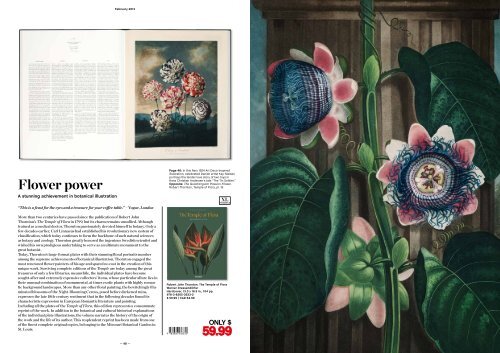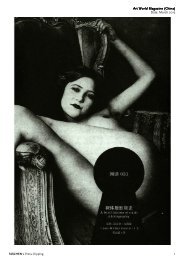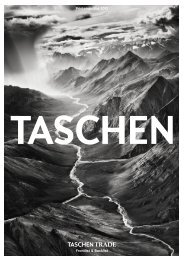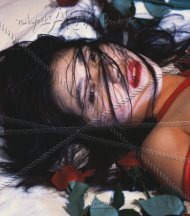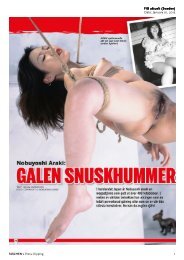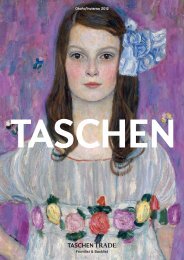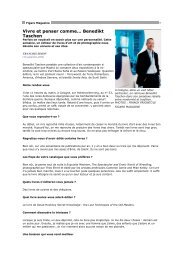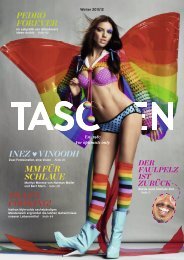STrUCTioN - Taschen
STrUCTioN - Taschen
STrUCTioN - Taschen
You also want an ePaper? Increase the reach of your titles
YUMPU automatically turns print PDFs into web optimized ePapers that Google loves.
February 2013<br />
Flower power<br />
A stunning achievement in botanical illustration<br />
“This is a feast for the eyes and a treasure for your coffee table.” —Vogue, London<br />
Page 46: In this fiery 1924 Art Deco-inspired<br />
illustration, celebrated Danish artist Kay Nielsen<br />
portrays the tender love story of two toys in<br />
Hans Christian Andersen’s tale “The Tin Soldier.”<br />
Opposite: The Quadrangular Passion-Flower.<br />
Robert Thornton, Temple of Flora, pl. 19<br />
XL<br />
Format<br />
More than two centuries have passed since the publication of Robert John<br />
Thornton’s The Temple of Flora in 1799, but its charm remains unsullied. Although<br />
trained as a medical doctor, Thornton passionately devoted himself to botany. Only a<br />
few decades earlier, Carl Linnaeus had established his revolutionary new system of<br />
classification, which today continues to form the backbone of such natural sciences<br />
as botany and zoology. Thornton greatly honored the ingenious Swedish scientist and<br />
wished his own prodigious undertaking to serve as an ultimate monument to the<br />
great botanist.<br />
Today, Thornton’s large-format plates with their stunning floral portraits number<br />
among the supreme achievements of botanical illustration. Thornton engaged the<br />
most renowned flower painters of his age and spared no cost in the creation of this<br />
unique work. Surviving complete editions of the Temple are today among the great<br />
treasures of only a few libraries; meanwhile, the individual plates have become<br />
sought-after and extremely expensive collectors’ items, whose particular allure lies in<br />
their unusual combination of monumental, at times exotic plants with highly romantic<br />
background landscapes. More than any other floral painting, the bewitchingly illuminated<br />
blossoms of the Night-Blooming Cereus, posed before darkened ruins,<br />
expresses the late 18th-century sentiment that in the following decades found its<br />
characteristic expression in European Romantic literature and painting.<br />
Including all the plates of the Temple of Flora, this edition represents a consummate<br />
reprint of the work. In addition to the botanical and cultural historical explanations<br />
of the individual plate illustrations, the volume narrates the history of the origin of<br />
the work and the life of its author. This resplendent reprint has been made from one<br />
of the finest complete original copies, belonging to the Missouri Botanical Garden in<br />
St. Louis.<br />
Robert John Thornton. The Temple of Flora<br />
Werner Dressendörfer<br />
Hardcover, 13.3 x 16.5 in., 104 pp.<br />
978-3-8365-3633-2<br />
$ 59.99 / CAD 64.99<br />
,!7ID8D6-fdgddc!<br />
Only $<br />
59.99<br />
— 48 —


